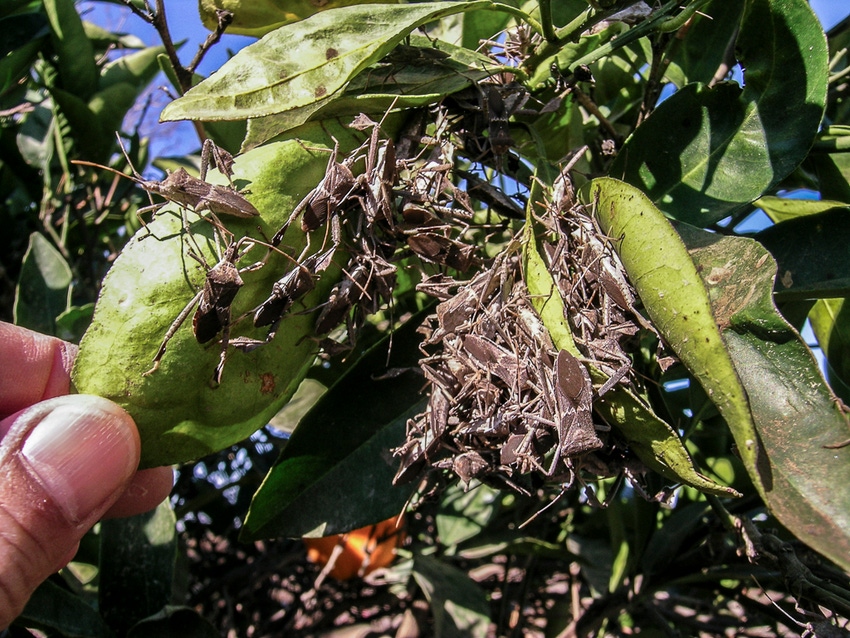March 20, 2015

Pest control advisors (PCAs) are urged to be on the lookout for leaffooted bug, Leptoglossus occidentalis (LFB), as indications suggest 2015 could be a particularly troublesome year for the pest.
Present indications point to the potential for significant LFB damage to almonds. This prediction is based on observations of very high populations of LFB during the fall of 2014 and a high overwintering survival rate due to mild winter weather.
Since March 15, multiple reports from PCAs across Kern County have been sent to UC Cooperative Extension offices. LFB is starting to move into crops. Although there are no known reports from the central and more northern growing areas, it would be prudent to begin monitoring now.
Monitor for LFB at least once a week from mid-March through May, and then every one to two weeks through June. The most effective monitoring method is a visual survey for the presence of bugs. This can be done by using a long pole to knock branches in the upper tree canopy, causing the bugs to fly so that they can be seen or heard.
General visual inspections should be coupled with specific inspections of the fruit by looking for gummosis on the almond hull; however, by the time gummosis is seen, damage has already occurred.
Gummosis can also occur due to physiological damage; therefore, if this inspection method is used, cut a cross-section in the area of the fruit with gummosis to determine the presence of a pin-sized discolored wound, caused by the penetration of the insect's mouthparts.
Also, inspect fruit on the ground for the presence of gummosis and a stinging wound to determine if LFB is the culprit. Be sure not to confuse gummosis caused by LFB (clear to light-amber color) with gummosis caused by bacterial spot (dark amber to orange color).
The primary control method for leaffooted bug is insecticides. Studies funded by the Almond Board of California in 2014 determined that the pyrethroids bifenthrin (Brigade) and lambda-cyhalothrin (Warrior II) have excellent contact activity against adult bugs, and residual activity against adults for two to four weeks.
The organophosphate chlorpyrifos (Lorsban Advanced) also had excellent contact activity in tests and provided one week of residual control. Three reduced-risk insecticides, containing abamectin (Agri-Mek), sulfoxaflor (Sequoia - label pending) and clothianidin (Belay), provided moderate to excellent activity when sprayed directly on the bugs. However, once residues dried, none of these three products provided any residual control.
Growers who use insecticides should do so only if monitoring indicates that LFB is present and is causing damage. Applications of insecticides should also only be made after considering any potential risks of product use to beneficial organisms, including bees and biological control agents, and to air or water quality.
For more information on these topics, consult the UC IPM Pest Management Guidelines for Almonds.
You May Also Like




